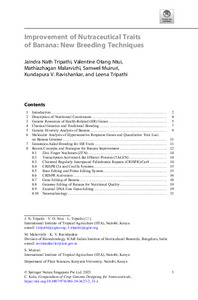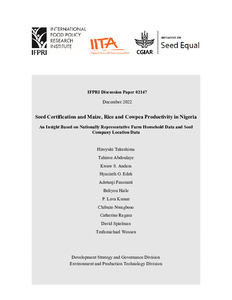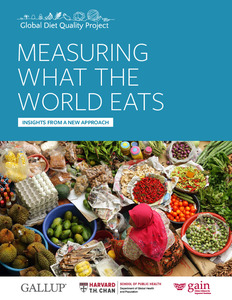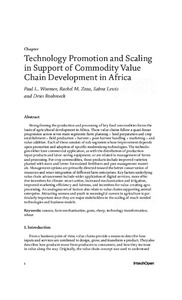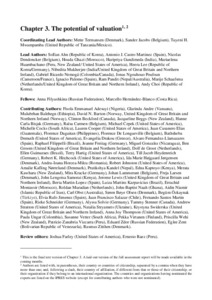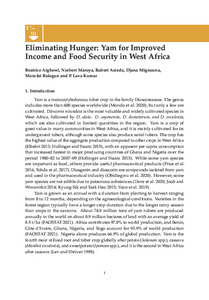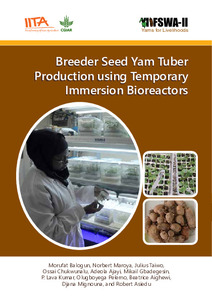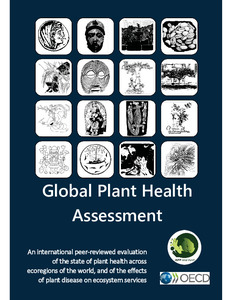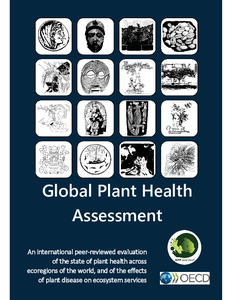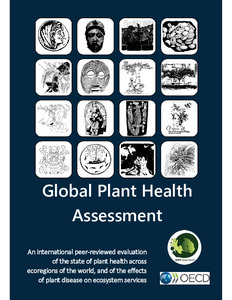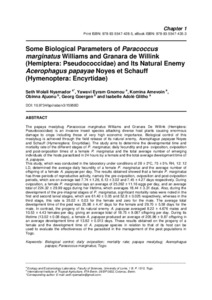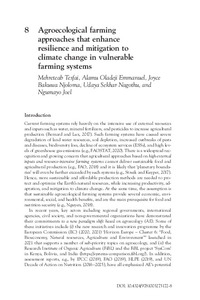Welcome to the International Institute of Tropical Agriculture Research Repository
Books and Book Chapters: Recent submissions
Now showing items 21-40 of 984
-
Improvement of nutraceutical traits of banana: new breeding techniques
(Springer, 2023-07-07)Banana (Musa spp.) is an herbaceous, everlasting green monocotyledonous plant belonging to the family Musaceae. It is a major staple crop after rice, maize, wheat, potato and cassava, and it has a high potential to contribute to food and nutrition security. It is an excellent fruit full of micronutrients, especially vitamin A, iron, potassium, and magnesium, and is a source of energy for millions of inhabitants of tropical and subtropical regions. Despite these qualities, banana is still lacking ... -
Seed certification and maize, rice and cowpea productivity in Nigeria: an insight based on nationally representative farm household data and seed company location data
(International Food Policy Research Institute, 2022-12)Despite the potential importance of seed quality to agricultural productivity growth, many governments in sub-Saharan Africa lack the capacity to expand quality assurance systems even where there is expressed interest. This study aims to evidence the value of quality assurance systems with an analysis of efforts to produce and distribute certified seed in Nigeria. We assess the associations between quantities of certified seeds produced and spatial variations in production locations proxied by ... -
Inventory of novel approaches to seed quality assurance mechanisms for vegetatively propagated crops (VPCs) in seven African countries
(IInternational Institute of Tropical Agriculture, 2022-10)This paper provides an inventory of novel approaches to and mechanisms for quality assurance of the seeds of vegetatively produced crops (VPCs). It explores to what extent seven African countries (Ethiopia, Kenya, Malawi, Nigeria, Tanzania, Uganda and Zambia) are decentralising and integrating VPC seed systems, in terms of regulations governing the sector, methods of seed production, and methods of seed inspection and certification. It consolidates existing data and presents new data on decentralised ... -
Creating a lean, reliable, and scalable platform for highfrequency data on diet quality in Rwanda
(Global Alliance for Improved Nutrition, 2022) -
Sustainable information technology practice in libraries
(IGI Global, 2023-01)Information technology is a crucial tool required for the growth of all sectors in any nation. Undoubtedly, its application in libraries contributes significantly to meeting people’s information needs since libraries are essential in providing information services to information seekers. Thus, a well-organized library should have sustained information technology to assist in providing correct and timely services to its patrons. This chapter used current and relevant research findings and papers ... -
Technology promotion and scaling in support of commodity value chain development in Africa
(IntechOpen, 2023-03-07)Strengthening the production and processing of key food commodities forms the basis of agricultural development in Africa. These value chains follow a quasi-linear progression across seven main segments: farm planning > land preparation and crop establishment > field production > harvest > post-harvest handling > marketing > and value addition. Each of these consists of sub-segments whose improvement depends upon promotion and adoption of specific modernizing technologies. The technologies either ... -
The potential of valuation
(IPBES, 2022-10) -
Breeder seed yam tuber production using temporary immersion bioreactors
(IInternational Institute of Tropical Agriculture, 2020-02) -
Breeding for abiotic stress resistance in yam (Dioscorea Spp.) using biotechnology approaches: present practices and prospects
(Springer, 2022-11-01)Yam (Dioscorea spp.) is an important crop providing food, income and medicine in tropics and subtropics. Major yam species in West Africa such as D. alata and D. rotundata are subject to several biotic and abiotic stresses throughout the cropping cycle and post-harvest periods, resulting in substantial tuber yield and quality trait losses. Abiotic stresses (heat, drought, low soil fertility, salinity, waterlogging, etc.) are currently exacerbated by the climate change effects. Yet, limited efforts ... -
Influence of soil moisture stress on vegetative growth and root yield of some cassava genotypes for better selection strategy in screen house conditions and different agro-ecologies in Nigeria
(IntechOpen, 2022-07-05)Cassava is a vital staple crop for many African populations particularly in Nigeria. This study was conducted to determine the effect of soil moisture on the performance of selected 12 cassava genotypes that were evaluated for yield and related traits under three percentages of field capacity (75% – control, 50%, and 25%) in the screen house and field conditions in three agro-ecologies (Ibadan-Derived Savanna, Mokwa-Southern Guinea Savanna, and Zaria-Northern Guinea Savanna) and randomized complete ... -
Biotechnology approaches in breeding for biotic stress resistance in yam (Dioscorea spp.)
(Springer, 2022)Yam (Dioscorea spp.) is a major staple and cash crop in tropical and subtropical regions. However, biotic (fungus, viruses, tuber rots, nematodes, insects, etc.) and abiotic stresses (drought, low soil fertility, etc.) substantially impact the productivity and quality of yam crop in regions where it is majorly cultivated. Developing and deploying resilient cultivars is a cost-effective and environmentally sound approach to enhance productivity in stressful environments. Breeding initiatives in yam ... -
Marker-Assisted Selection (MAS): untapped potential for enhancing food and nutrition securities in sub-Saharan Africa
(Springer, 2022-11-17)Global food security has raised concerns for the rapidly growing population and extreme weather due to climate change. Conventional plant breeding deployed the current greatly fecund crops, but there must be an increase in the genetic improvement to meet the anticipated future demand. Existing crop breeding techniques and recent technologies could resourcefully be reconnoitered to increase crop improvement in the façade of increasingly perplexing production condition, which is discussed in this ... -
Maize in sub-Saharan Africa
(International Society of Plant Pathology, 2022) -
Towards our phosphorus future
(UK Centre for Ecology and Hydrology, 2022-05)There are abundant opportunities to transition towards more sustainable phosphorus use. Taken collectively, these solutions unlock multiple environmental and societal benefits. Actions must be delivered cooperatively, as part of an integrated plan across sectors and scales. Indeed, coordinated action on phosphorus to support governments, existing conventions, and inter-governmental frameworks, as well as stakeholders, to catalyse improvements in phosphorus sustainability is urgently required. An ... -
Cassava in sub-Saharan Africa
(International Society of Plant Pathology, 2022) -
Banana and plantain system in sub-Saharan Africa
(International Society of Plant Pathology, 2022) -
Some biological parameters of Paracoccus marginatus Williams and Granara de Willink (Hemiptera: Pseudococcidae) and its natural enemy Acerophagus papayae Noyes et Schauff (Hymenoptera: Encyrtidae)
(B P International, 2022-06)The papaya mealybug Paracoccus marginatus Williams and Granara De Willink (Hemiptera: Pseudococcidae) is an invasive insect species attacking diverse host plants causing enormous damage to crops including those of very high economic importance. Biological control of this mealybug is achieved through the field release of its natural enemy, Acerophagus papayae Noyes and Schauff (Hymenoptera: Encyrtidae). The study aims to determine the developmental time and mortality rate of the different stages ...

